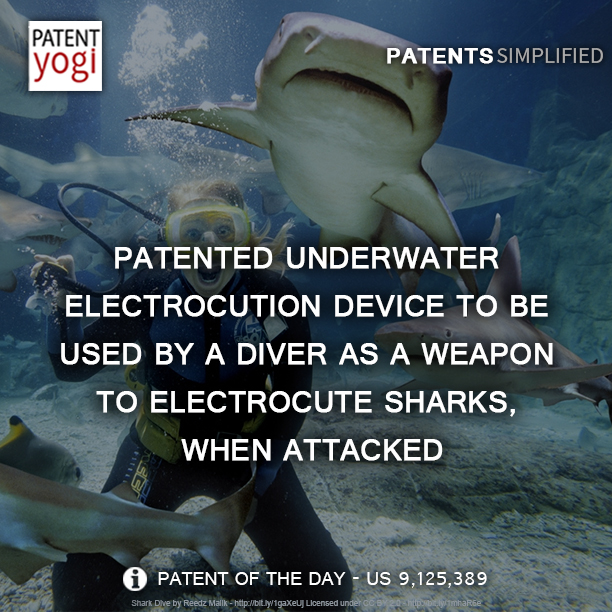There is a great variety of weapon choices available that one can choose from when on the surface of the Earth, but once entering the vast realm of the undersea world, the choice of offensive or defensive weapons dwindles to almost nothing. About the only choices are a hand-held knife and a spear gun, which has very limited use. Spear guns typically involve a long spear with a pointed tip loaded in the spear gun. The spear gun typically shoots the spear via a rubber band or by pneumatic means. Usually, the spear is inserted in the barrel of an elastic band type gun until it is seated in the trigger mechanism. One or two spears in a spear gun have been described and after these are shot, the spear gun must be reloaded. Spear guns are usually long, cumbersome weapons and reloading them underwater is a widely recognized as a difficult task.
Use of paired electrodes generating electric fields within sea water has been described as a means for repelling sharks and for killing nuisance aquatic life. Devices similar to cattle prods have been described. These devices, when inserted by a dry user from above the water level into the sea or other body of water typically utilize two electrodes in close proximity and operate by passing current between the electrodes. None use a single electrode for electrocuting an underwater living being, and none involve use by submerged divers holding the device like a knife, a pistol or a spear gun.
An underwater electrocution device may be used by a diver as a weapon to electrocute sharks or other underwater predators. It has a frame in the form of a hand-held weapon, such as a pistol or a knife. A watertight compartment within the frame houses a motor that can be activated by the diver. The motor turns an electric generator also within the watertight compartment. The electric generator is connected to a ground plate in contact with the water when the device is being used. A terminal on the generator provides electrical output. A power supply device, such as a battery, is connected to provide power to run the motor. A spear tip is made of an electrically conducting metal and a frangible cover over the spear tip electrically insulates the spear tip, and breaks upon impact to expose the spear tip. An electrical conducting wire is attached to the trailing end of the spear tip so as to electrically connect the spear tip to the terminal of the electric generator. A capacitor may be included that is rechargeable by the generator and also electrically connected to the wire. A typical spear gun ejection mechanism may be included to shoot out the spear tip when activated. But the hand-held weapon may be in the shape of a knife where no ejection takes place.
Patent Title: Underwater electrocution device
Patent Number: 9,125,389
Inventors: Calvert; S. Mill (Manassas, VA)
Assignee: UED Associates (Manassas, VA)
Family ID: 1000001164942
Appl. No.: 14/317,440
Filed: June 27, 2014
Abstract: An underwater electrocution device may be used by a diver as a weapon to electrocute sharks or other underwater predators. It has a frame that defines a watertight compartment to house a motor and a generator. The motor when activated runs the generator. The electric generator is connected to a ground plate in contact with the water when the device is being used. A power supply device, such as a battery, provides power to run the motor. A spear tip is made of an electrically conducting metal. A frangible cover over the spear tip electrically insulates the spear tip, and breaks upon impact to expose the spear tip. An electrical conducting wire is attached to the trailing end of the spear tip so as to electrically connect the spear tip to the terminal of the electric generator. A spear gun ejection mechanism may be included to shoot the spear tip.
Image credits: Shark Dive by Reedz Malik – https://www.flickr.com/photos/anakbrunei/7095015539/ Licensed under CC BY 2.0 – https://creativecommons.org/licenses/by/2.0/


